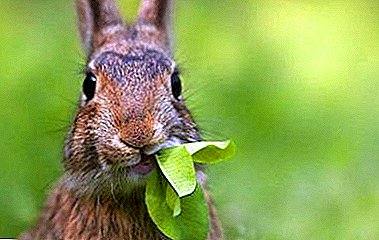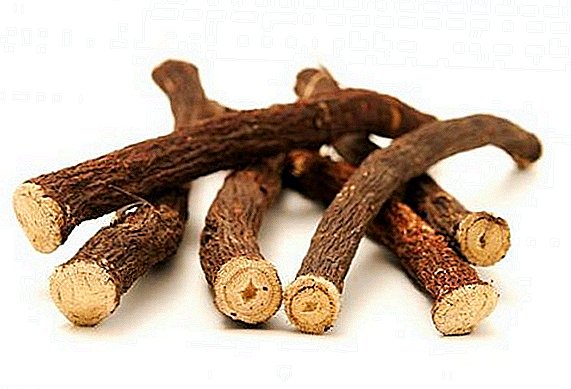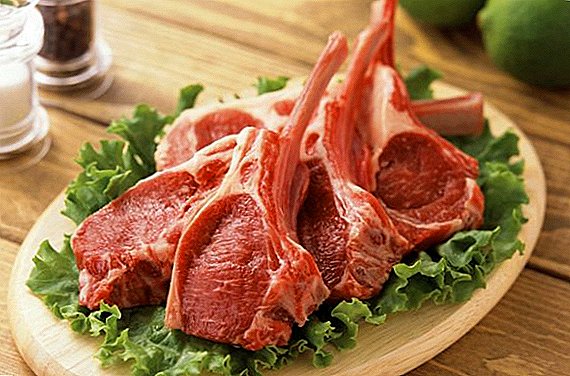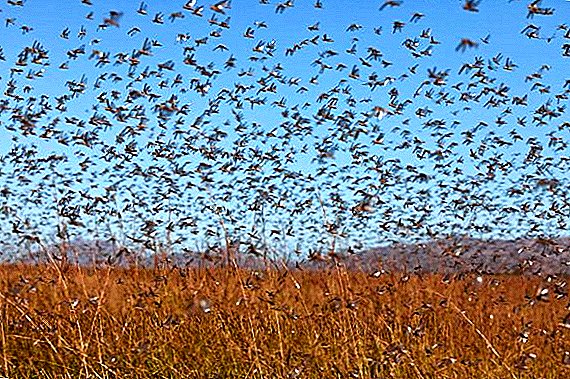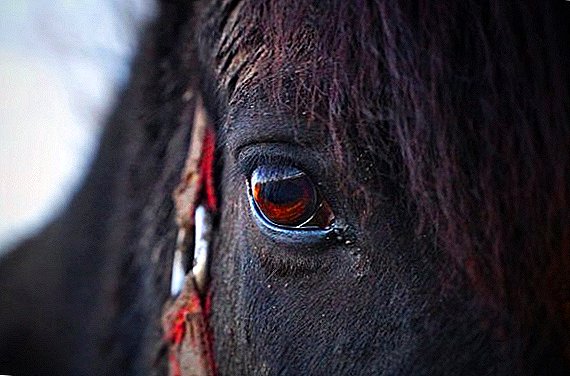 Often, horse owners are poorly versed in the structure of their body. The hosts just take care of them and ride, without questioning the truth of the stories of experienced trainers or veterinarians. However, to study the features of the structure of horses is not only useful, but also interesting. This article focuses on the eyes and possible problems with them.
Often, horse owners are poorly versed in the structure of their body. The hosts just take care of them and ride, without questioning the truth of the stories of experienced trainers or veterinarians. However, to study the features of the structure of horses is not only useful, but also interesting. This article focuses on the eyes and possible problems with them.
The structure and color of the horse's eyes
The structure of the eye of ungulates is aimed at the early detection of a predator - this is typical of herbivorous animals that live in open areas. Horse eyes are located on the sides of the head; they are large in size with an oval pupil.  Consider what parts the eye consists of:
Consider what parts the eye consists of:
- Cornea - is a transparent shell of a convex shape. It is in it that the initial focusing takes place.
- Lens - A lens that completes the focusing process.
- Pupil - is part of the lens, which is surrounded by a circular muscle (iris), changing its shape depending on the lighting and location of the object. The horse has a cross-oval shape.
- Retina - finally perceives the image and represents the lining of the choroid of this organ.
Familiarize yourself with the anatomy of a horse in general, and, in particular, with the structure of the limbs of a horse and horse's tail.
On the iris there are pigment cells that are responsible for the color of the horse's eyes. Most often horses have brown eyes of different shades. 
Visual ability
Features of the structure of the eyes determine what opportunities in terms of view nature has endowed horses.
Visual field
The position of the eyes of the horse on the sides of the head gives the animal a much greater view than that of a man. When the head is raised, the field of view approaches the spherical.
Many animals have this feature, which can become a predator victim at any moment, however, the horses have eye sockets turned slightly forward, which gives a viewing angle of about 60 °.
The "blind zone" in horses is insignificant - they do not see only what is happening right behind the nape, they must be forehead and under the chin. And to consider these places, it is enough even a small turn of the head.
Learn how to apply feed to the hooves, joints and hair of a horse.
Acuity and focusing vision
Visual acuity in an animal is slightly higher than in humans. Modern scientists believe that the small horizontal line that is filled with receptor cells crosses the retina right in the center of the eye - this area perceives light best of all.  Its action is similar to the function of the central fossa in the human eye. The fact that it is deployed horizontally facilitates the examination of objects on the surface of the earth - this helps the horse to detect predators and possible obstacles.
Its action is similar to the function of the central fossa in the human eye. The fact that it is deployed horizontally facilitates the examination of objects on the surface of the earth - this helps the horse to detect predators and possible obstacles.
Do colors distinguish
A well-known expert who has been practicing horse vision for a long time, Dr. Brian Timney believes that horses look like people with a slight color perception disorder.
He is sure that these animals distinguish red or blue from gray without any problems. Relative to green and yellow - the results are contradictory.
Did you know? During horse racing, horses are less likely to knock down an obstacle, jumping over it, if it is painted not in one color, but in two or more.
However, it is still possible to say with accuracy that horses distinguish colors and react to them with ease. For example, if you take two troughs, red and blue, of the same shape, and regularly put food only in blue, the horse will begin to recognize it and approach only it, ignoring the red one. 
See in the dark
In the dark, a horse can see better than a man. There are almost 20 times more rod-shaped cells that perceive weak light on the retina of a horse's eye than cones.
In addition, under the retina of this animal there is a kind of "mirror" of silver crystals (tapetum). The light reflected from it re-moves through the retina, thereby reducing the likelihood that it will pass by the chopstick receptors.
Find out what is remarkable about horse breeds: the Soviet heavy truck, Trakene, Frisian, Andalusian, Karachai, Falabella, Bashkir, Orlov trotter, Appaloosa, Tinker, Altai.
Even if at the same time there is some dispersion of the clarity of outlines, it does not prevent animals from being well oriented in the dark.
Owners must take into account that horses do not adapt well to sudden changes in light, so they can be frightened, say, from the lawn to a dark van.
The complex structure makes the organs of vision of the horse very sensitive to external influences, so they are often subjected to various pathological processes. 
Horse Eye Diseases
Despite the common expression "healthy as a horse", these large animals can also be sick. Consider the symptoms and methods of treatment of the most common eye diseases.
Learn how to care for a horse and pony.
Conjunctivitis
Conjunctivitis is a disease that is inflammatory or infectious.
It leads to the following symptoms:
- eye swells and reddens;
- the eyelid becomes red and vitreous;
- sticky discharge of yellow or green color appears;
- eyelid for a long time remains half empty;
- the animal is lethargic and refuses to eat.
 Primary need to clear the mucous by washing with 3% solution of boric acid or potassium permanganate in a ratio of 1: 5000. If pus is secreted, then furatsilin is used, and later - eye ointments with antibiotics.
Primary need to clear the mucous by washing with 3% solution of boric acid or potassium permanganate in a ratio of 1: 5000. If pus is secreted, then furatsilin is used, and later - eye ointments with antibiotics.Did you know? Riding a horse on the ground, in which he feels great pleasure - not just entertainment. Thus, the animal stimulates blood circulation and restores strength.
Cataract
The cataract is manifested in the opacity of the lens, responsible for focusing the light on the retina. Similar problems with time lead to loss of vision.
Symptoms are as follows:
- milky white spots on the surface of the eyeball;
- poor eyesight;

Recurrent uveitis
This disease, which is also called "moon blindness," is a common problem that causes the appearance of serious pathologies. It manifests itself in the form of episodic intraocular inflammations, which are caused by microorganisms and take a fairly long time. Uveitis can lead to secondary inflammation - for example, it can cause a corneal ulcer and lead to recurrent uveitis.
Learn how to properly transport a horse.The disease is manifested by the following symptoms:
- choroid inflammation;
- constriction of the pupil;
- small spots on the pupil;
- the cornea is turbid, blue.
 Most commonly used:
Most commonly used:- steroid drops - for getting rid of inflammation;
- atropine - for pain relief;
- antibiotics - for the treatment of infections.
Important! For the treatment of the eyes should be applied exclusively ointment with the inscription "For ophthalmic use" - otherwise, you can inflict more damage to the animal.
Blocked tear ducts
The flow of tears into the nasal cavity occurs through the tear duct, which is very thin and can easily be damaged or clogged, which will prevent the tears from draining naturally.
The blocking of the tear ducts is manifested by the following symptoms:
- watery eyes;
- overflowing with tears of the eyelid area;
- hair loss under the eyelid.
 The treatment consists of systematic cleaning of the eyes with moist sterile cotton; an infection shows the use of eye drops with an antibiotic in the composition. In addition, the veterinarian can wash the ducts, but this is a rather uncomfortable procedure, which is performed with sedation (anesthesia).
The treatment consists of systematic cleaning of the eyes with moist sterile cotton; an infection shows the use of eye drops with an antibiotic in the composition. In addition, the veterinarian can wash the ducts, but this is a rather uncomfortable procedure, which is performed with sedation (anesthesia).Find out if infectious anemia is treated in horses.
Squamous cell carcinoma
Squamous cell carcinoma is one of the most common malignant tumors affecting the eyelids. The disease manifests itself in the form of warts or growths on the eyelid or surface of the eye.
Main symptoms:
- damage to the edge of the lower eyelid and the outer corner of the eye;
- the growth of a dense plaque or knot with jagged edges;
- the spread of inflammation in the neighboring tissue.

Sarcomas and melanomas
These two types of tumors can potentially affect the eyes and the surrounding tissue.
 You can diagnose them by the following symptoms:
You can diagnose them by the following symptoms:
- edema of the upper eyelid;
- visual impairment;
- appearance of nasal congestion;
- protrusion of the eyeball;
- not closing the century;
- appearance of ulcers on the cornea.
Learn how to choose a horse for yourself.
Corneal ulcer
The cornea protects the inside of the eye from damage, but is often itself affected by this.
Any problems associated with it are very painful and cause the following symptoms:
- frequent tearing;
- constant blinking;
- misting of the eyes;
- soreness;
- change in the shape of the pupil;
- edema;
- reduced vision
 Treatment should be complex and consist of systemic and local antibacterial and immunostimulating drugs. For deep injuries, microsurgery is performed.
Treatment should be complex and consist of systemic and local antibacterial and immunostimulating drugs. For deep injuries, microsurgery is performed.Important! Do not use ointment or drops, which have cortisone in the composition, without having information about the absence of a corneal ulcer. - in the presence of an ulcer, this substance aggravates this problem.
Why do horses partially close their eyes on horse racing and in harness
Despite the strength and power, horses are quite shy animals. To protect especially nervous stallions from external irritants, people have invented blinders - special shields, which are used to restrict vision. They are made of plastic, wool or leather. Such devices help the horse to become more restrained, more collected and calmer. Most often they are used on races and during dressage in busy places, as well as for horses harnessed to carriages.
In addition to the blinders, blinders are used - devices that completely close the eyes from the side and allow the horse to look exclusively forward. They are made of durable plastic. They are also needed so that the dirt does not fly into the eyes during a jump, or to reduce the flow of light into the eyes according to the testimony of a veterinarian.  Thus, care for the safety of horses is an important task for their owners. To minimize problems, you need to carefully monitor the health of your pets, referring to a doctor at the first appearance of alarming symptoms.
Thus, care for the safety of horses is an important task for their owners. To minimize problems, you need to carefully monitor the health of your pets, referring to a doctor at the first appearance of alarming symptoms.





